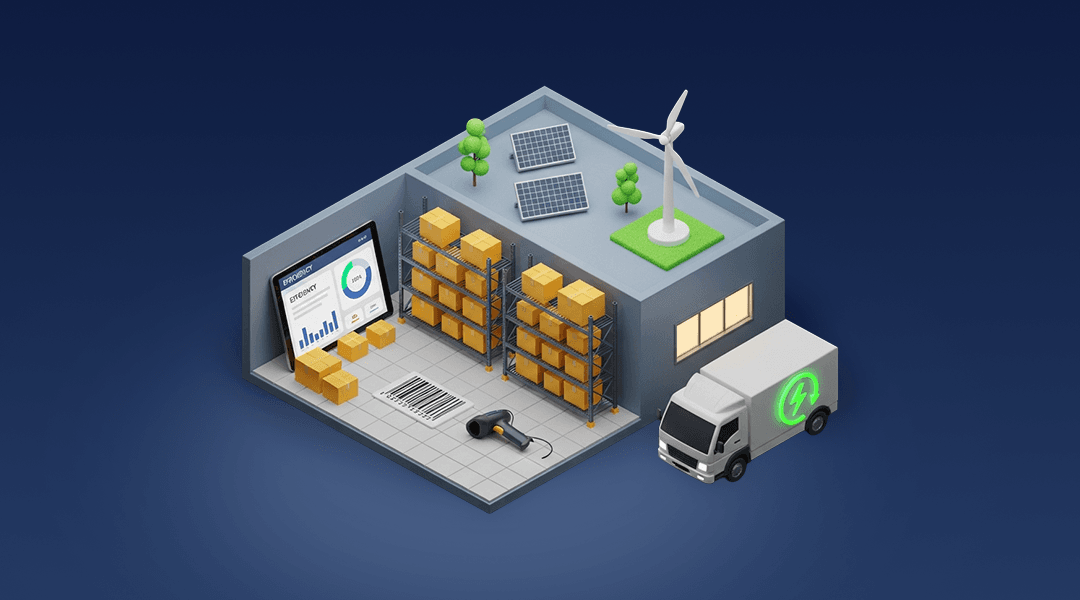Real-Time Inventory Tracking: The Key to Streamlined Operations
Table of Contents
What Is Real-Time Inventory Tracking?
It allows advanced inventory tracking to track changes in the sales channels and warehouses and update the system. It is very advanced and gives minute-to-minute visibility into stock quantity, location, and movement throughout the supply chain.
The differences between these two methods would include real-time inventory tracking systems, which are automated in contrast with traditional methods using periodic updates and manual counts. Real-time inventory tracking guarantees accuracy constantly through automated collection and updates of data.
The system functions by combining the latest technologies and automated processes with which businesses can maintain even the most precise inventory record without human intervention. Business enterprises can simultaneously access or monitor information related to multiple inventories with the help of distributed database systems. This makes managing complicated supply chain operations a little easier and enables quick delivery of orders!
This modern view of inventory management systems, over time, has become quite critical for businesses looking at optimal operations. Real-time tracking gives instant visibility to the stock levels, preventing stockouts, reducing excess, & enhancing customers' satisfaction in terms of accurate product availability information. Automation in data capture and processing, for instance, eliminates errors arising from manual counting while allowing quick, informed decisions that enable rapid response to changes in the market.
Why is Real-Time Inventory Tracking Important for Businesses?
Real-time inventory tracking has become an important function of the current business operation as it brings a myriad of critical benefits directly into the bottom line. Advanced inventory management systems ensure against stockouts by keeping up-to-date product levels and automatically generating reorder points if stock levels get low. This, in turn, avoids overstock situations that would tie up expensive resources and increase the costs of storage.
This goes beyond stock control because it would really improve operational efficiency as the system is designed to monitor itself and minimize human intervention. Real-time tracking provides immediate visibility across locations, thus enabling businesses to match inventory across channels and improve warehouse inventory tracking & operations. Improved efficiency means saving on operational costs, reducing delays, and smoothing out the order fulfillment process.
Some good examples of improvement are reflected in the application of real-time tracking. According to some successful businesses, their inventory variance has significantly been reduced by up to 85%, which indicates that frequent and accurate information on stock-up products enables them to make decisions while optimizing warehouses' layouts with their findings of patterns of product flow. This will improve the visibility of the supply chain so that businesses can maintain optimum stock levels while improving customer satisfaction through the timely availability of products and faster order processing.
How Does Real-Time Inventory Tracking Work?
Real-time inventory tracking functions on a complex interplay of cutting-edge technologies that combine to provide instant stock visibility and constant updates. This is a modern warehouse inventory tracking system combining several components to ensure the accurate, automated monitoring of inventory levels along the supply chain.
Real-time inventory tracking is founded on several key technologies:
Barcode Systems
Traditional barcode scanning remains a relatively cost-effective and reliable method to track inventory. Barcodes allow for accurate tracking of individual items using equipment and can be easily integrated with inventory management systems to give an instant stock update. It is very effective for businesses that have moderate volumes of inventory and simple tracking requirements.
RFID Technology
RFID systems are more advanced ways of real-time tracking that make use of electromagnetic fields to automatically identify and track tagged objects. Such tags can hold extensive information, including product details, serial numbers, and manufacturer history. RFID technology has further capabilities in that it can read many items at once without requiring a line of sight and improve the accuracy of inventory from 63% to 95%.
Internet of Things (IoT) Integration
The network of connected IoT devices is built by installing sensors, GPS trackers, and cameras throughout the warehouse and storage facilities. They constantly collect and exchange data regarding stock levels, item locations, and environmental conditions. Combining IoT with RFID technology builds a strong real-time visibility system, which provides for automated low stock alerts; it starts an order replenishment automatically.
Cloud Computing and AI Systems
Modern inventory management systems are now empowered by cloud computing and artificial intelligence. These technologies have generated significant amounts of data through tracking and monitoring. AI-based fulfillment management systems analyze inventory data and adjust themselves according to changing market trends. Thus, machine learning algorithms may predict future stock levels as well. It allows real-time processing of real-time data and real-time simultaneous updates across locations.
The synergy of all these technologies creates an omnibus real-time inventory tracking system that offers:
- Continuous stock level monitoring
- Automated capture and processing of information
- Instant updates across all the channels
- Predictive possibilities for inventory management systems
- Reduce human error in stock counting.
- Supply chain visibility is improved.
This is the most advanced form of stock count, which is periodic, allowing businesses to keep an accurate record of their stock and make decisions based on real-time data.
Best Tools and Software for Real-Time Inventory Tracking
The marketplace has a wide variety of real-time inventory tracking systems that cater to different business requirements and scales. These systems combine the latest technology and user-friendly interfaces to support complete stock control capabilities.
NetSuite is an enterprise-level product that provides full-time inventory visibility, with demand planning and warehouse inventory tracking management features being extremely robust. The product really outshines its competition by offering multi-location support as well as advanced reporting. This makes it perfect for manufacturing and e-commerce companies.
Fishbowl has emerged as a strong solution for small and medium-sized businesses, mainly in manufacturing and wholesale distribution. Its integration with QuickBooks is seamless, with robust barcode scanning capabilities; hence, it's much more valuable to companies that want to simplify their work. The system will help avert stockouts and ensure that the optimum inventory is maintained through automated purchasing as well as multi-location management.
QuickBooks Commerce, formerly known as TradeGecko, is a comprehensive feature set for small to medium-sized businesses. It excels in multichannel inventory management and gives real-time stock updates across various sales channels. It is also an ideal choice for online retailers because it can integrate with other major e-commerce platforms.
Cin7 is highly notable in businesses that call for much more advanced supply chain integration. The platform offers smooth workflows and real-time updates on inventory, which comes in handy for multichannel retailers and wholesalers. Its cloud architecture has made it possible to share accessible real-time updates among any number of locations.
Zoho Inventory is, therefore, the cost-effective solution for small to medium-sized businesses and offers real-time tracking along with auto-updates for stock levels. Its strengths are its easy-to-use interface and the seamless integration of other business systems, making it suitable for growing companies.
SkuNexus has specialized warehouse inventory tracking capabilities, which include real-time monitoring and advanced automation capabilities. Its users have been able to achieve significant operational efficiency, with some of them stating that they increased their productivity by up to 30% through customizable workflows and integration capabilities.
These solutions come in different manners for real-time inventory tracking as they vary with different methods of offering advantages depending upon the business size, specific industry, and specific needs. What is most critical is selecting a system that harmonizes your operational needs yet supports growth.
Key Features to Look for in Inventory Tracking Tools
When choosing inventory management systems, several features become very important as the foundation of what makes a good real-time inventory tracking system. These capabilities determine whether the system can meet business needs and provide optimal performance in warehouse inventory tracking & operations.
Real-Time Monitoring and Alerts
It is vital to have an inventory tracking system that provides instantaneous visibility of the levels and movements of the stocks. The system should alert one of the low stock levels, possible stockouts, and reorder points to manage the inventories proactively and avert supply chain disruptions.
Multi-Location Management
The latest warehouse inventory tracking solutions should possess multi-location, synchronized management capabilities. This keeps real updates about stock at all facilities such that the proper distribution of products is ensured irrespective of location.
Interfacing Abilities
The system should easily integrate with existing business tools, accounting software, ERP systems, and e-commerce platforms. This integration eliminates duplicate data entry and ensures consistent information across all business operations.
Advanced Analytics and Reporting
Report comprehensively to enable data-based decision-making. The system will thus be required to provide very essential insights into inventory turnover and demand patterns as well as the variance reporting for potential causes or optimal restocking levels.
Scalability and Customization
Inventory management systems should scale up with your business. A system that offers modular functionality can increase transaction volumes and accommodate growth in product lines.
Automated Purchase Orders
The system should automatically place orders when the stock reaches the set levels. This would help maintain the optimal level of stock while avoiding manual intervention.
Barcode and RFID Compatibility
Support for several tracking technologies, such as barcode scanning and RFID, is very important for the proper management of inventory. These technologies help in tracking stock movements very quickly and accurately, thereby avoiding human errors in data entry.
User Interface Friendliness
The system needs an interface that is user-friendly and requires the least training. This will lead to fast adoption within the organization and a reduced propensity for user errors in inventory management systems.
Final Thoughts:
Real-time inventory tracking changed how businesses handle warehouse inventory tracking as well as the way control stock is done. Today, modern inventory management systems let the business track the current levels of their stocks and maintain a higher level of control of them while minimizing cost factors in operations and satisfying customers.
The applications of technologies like RFID, IoT, and cloud-based solutions allow a greater real-time updation of stocks compared to traditional methods. As companies are constantly changing toward the highly digital marketplace of the world, implementing inventory tracking solutions in warehouses has become an advantage and even the only requirement for maintaining a firm edge and operational excellence on a competitive level.
FAQs
Q: What is real-time inventory tracking?
A: Real-time inventory tracking is the automatic system that updates one on the stock levels in every sales channel or warehouse in real-time and with minute-to-minute information regarding quantity, location, and movement throughout the entire supply chain.
Q: What are some of the best tools for implementing real-time inventory tracking?
A: Leading solutions consist of NetSuite for larger enterprise-level operations, Fishbowl for manufacturing and wholesale, QuickBooks Commerce for multichannel management, Cin7 for advanced integration with the supply chain, and Zoho Inventory for small to medium businesses.
Q: How does real-time inventory tracking enhance business efficiency?
A: Efficiency is improved by preventing stockouts, reducing excess inventories, automating the collection of data, real-time multi-location visibility, and improving customer satisfaction based on accurate product availability
Q: Which technologies enable real-time inventory tracking?
A: These systems make use of a combination of technologies like barcode systems, RFID technology, IoT devices, cloud computing, and AI-driven systems for the continuous monitoring of inventory levels and automated updates.























